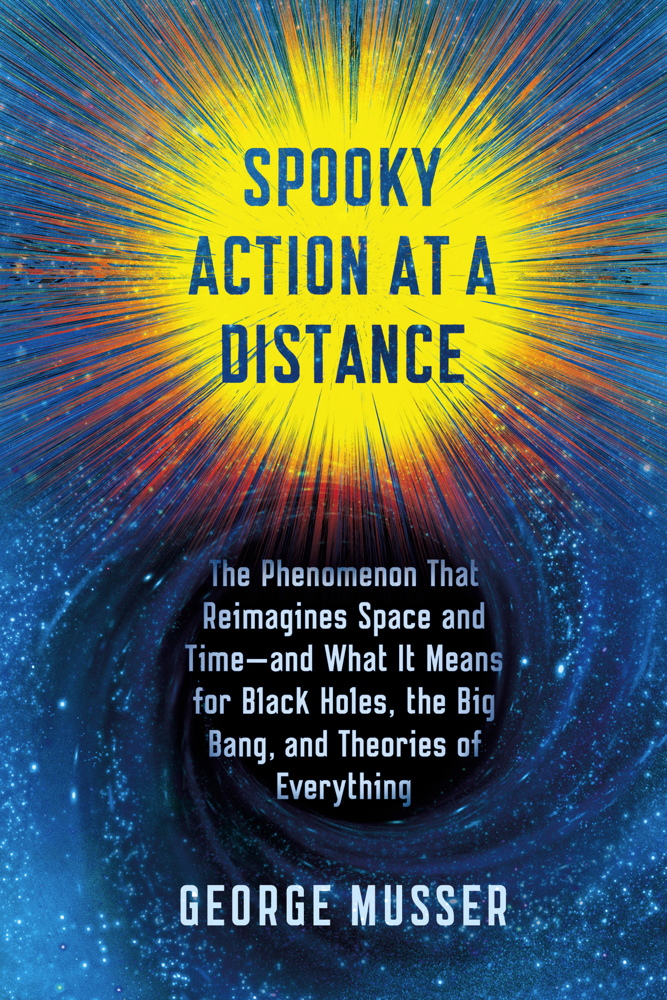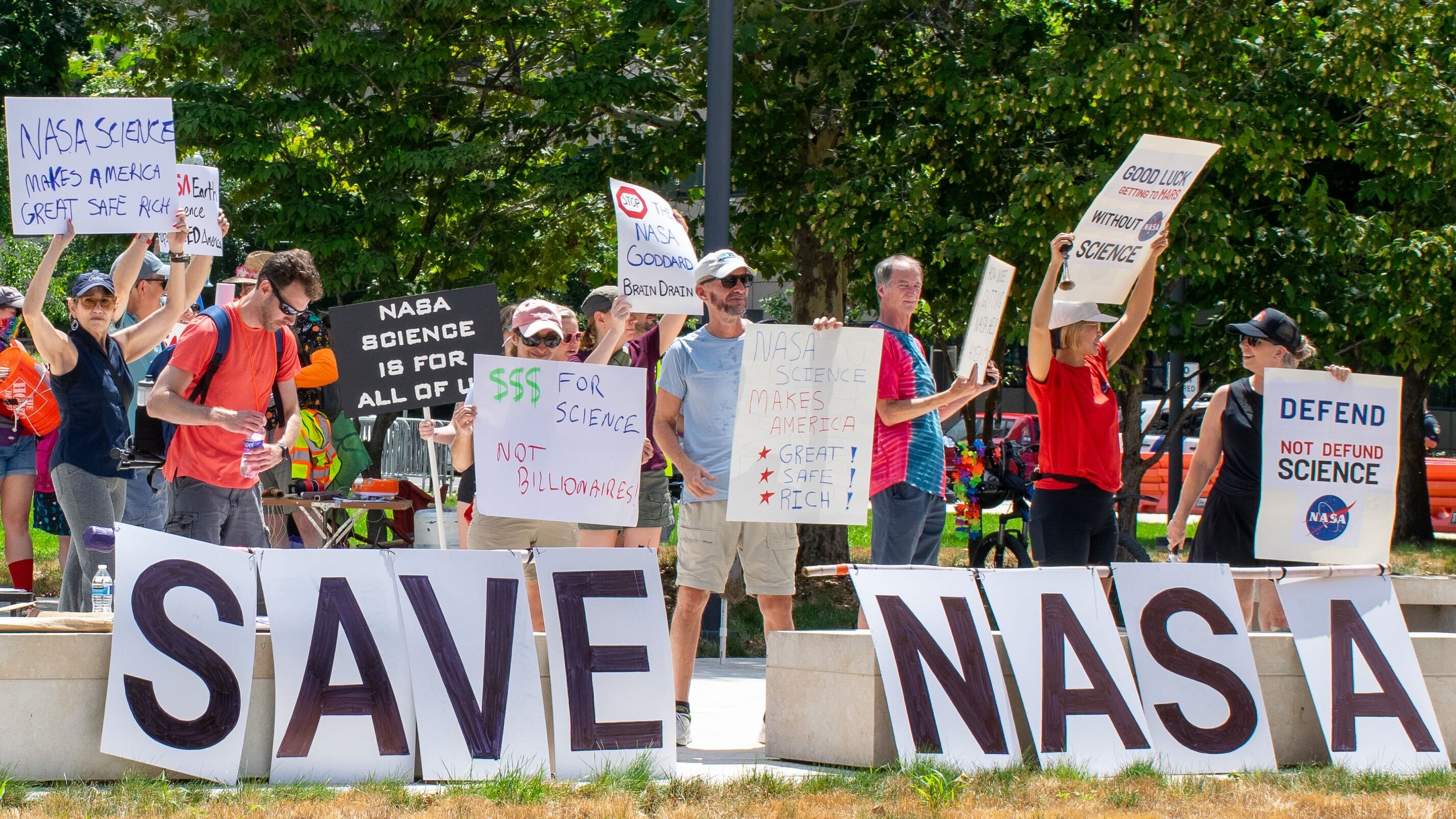'Spooky Action at a Distance' Author George Musser Talks Physics Loopholes

There's something strange going on in the universe that calls into question scientists' basic assumptions about space and time — that they exist, for one thing, and that they can separate objects and prevent them from interacting instantaneously. But most people don't notice those conflicts unless they know where to look.
George Musser's new book, "Spooky Action at a Distance" (Farrar, Straus and Giroux, 2015), explores a class of subtle effects and paradoxes that show a brash disregard for the concept of spatial separation, such as particles that affect each other instantly when separated by large distances, called entangled particles; and data that must be simultaneously on the surface of a black hole and deep within it. All of the phenomena are examples of nonlocality, which Albert Einstein famously described as "spooky action at a distance." (The book's subtitle refers to the phenomenon's significance to black holes, the Big Bang and theories of everything.) There are hints of nonlocality in multiple fields of physics, and Musser chronicles the messy struggle to understand how it fits into the theories and assumptions that make up physicists' understanding of the universe.
Space.com talked with Musser about his new book and the concept of nonlocality, which he called unsettling, in the sense of something that drives research forward — unsettling but also intriguing. [Watch: Quantum Entanglement Test On Space Station]
Space.com: What is it about nonlocality that is so unsettling to our understanding of reality?

George Musser: Nonlocality is like magic. As has been said, it's the closest thing we have to magic in contemporary science: when something here, in one place, can affect something there, in a totally different place — maybe even across the room, across the universe — instantly. And, more importantly than even the "instantly" part, without anything passing between them.
Another way to put it, though, is that humanity's theories of the world are formulated spatially. […] Something here moved over there. Something here bumped into something over there. This thing here has a shape; it has a size. Everything we can articulate about the world is a spatial description.
Locality is what makes that spatial picture work, because it allows you to identify different locations in space, it allows you to ascribe some kind of independence to those different positions in space. So, if something is questioning locality, it's also questioning space. And therefore, it's questioning the theories that are based on space, which is every theory we have.
Breaking space news, the latest updates on rocket launches, skywatching events and more!
Space.com: What example of nonlocality did you find most surprising?
Musser: The one that people talk about is these particle experiments. I only actually saw one in operation, about four years ago, I guess it was, and that was at this laboratory at Colgate University. It's extremely subtle, because all you really see as a result are the numbers. You see a row of numbers, a spreadsheet of numbers. And then, you have to reverse-engineer it and see that those numbers represent something that can't be explained locally. [Editor's Note: In these experiments, sets of particles are either entangled with each other or not. They are then sent through separate, identical filters that randomly let 50 percent of the particles through. If entangled, the particles will always either both make it through or both be stopped, even though they can't possibly communicate with each other to find out what happened to the other one.]
Then, the other example that really prompted the book was just thinking about black holes, and that black holes, which we all know are extremely weird and paradoxical — why are they weird and paradoxical? When you begin to work through the arguments, it seems to involve some sort of nonlocality, or it seems to demand it in order for them to be consistent with what we know about the rest of physics.
Space.com: The book vividly describes the disagreement among scientists — about whether nonlocality is a true representation of reality and, if so, how to interpret it — and the messy way ideas spread among researchers. Can you talk a little bit about that?
Musser: The original disagreement goes back to Einstein and [Niels] Bohr over the meaning of quantum entanglement. And what's interesting and perplexing about that is that it was in the [19]20s, in the '30s. This is a long-standing dispute.
Nobody disagrees on the experiments. This isn't one of those cases in science [where] people can't agree on the data; they all agree on the data. But still, to this very day, there's disagreement over what it all means, and I think that really testifies to the subtlety of the topic and the degree to which it violates our intuitions. As an outsider to this field, you're kind of left with: What am I supposed to do with this?
There are some ways you can pull back and gain some perspective on any kind of dispute. I think the same principle would apply to any dispute in science, not just nonlocality disputes. And one is to look for commonalities among the different positions — things that even the protagonists might not appreciate, but that they really, at some level, are all saying the same thing. And I think, in this case, they're all saying […] that there's something funky, something off with our dimensional, classical understanding of space and time.
Space.com: Why do researchers have so much trouble with nonlocality?
Musser: It's a difficult subject, and it's a difficult subject in a different way than other subjects in physics are difficult. If we want to talk about magnetohydrodynamics, if we want to talk about the intricacies of string theory or turbulence, these kinds of topics are difficult because there's a lot — climate — because there's a lot going on, there's a lot of processes all interwoven with one another, and it's just a big jumbled mess. This kind of nonlocality is not difficult in that same way; it's not difficult for pure volume of weird and intricate things to understand. It's difficult because it's extremely subtle, very subtle. So the actual principles are just even a few lines of math, but it's understanding what that means that makes it so difficult.
Space.com: Will tying it all together take more observations and data, or just thinking about it in the right framework?
Musser: I'm projecting into the future on this, which is always a perilous thing to do, but I think [it will involve] both. I think some deep thinking has to be done here, but clearly, after 80-some-odd years of thinking, and disagreements are still quite live, I don't think that will be enough. I tend to think any theory is only understood when you have the next theory. […] Special relativity we know better because of general relativity, and we'll probably know general relativity better when it's put into a quantum theory of gravity. Same goes for quantum mechanics. If quantum mechanics is eventually subsumed into a more general theory, we'll then know quantum mechanics. Then, of course, the mystery will move on to the new theory.
We need a context for [quantum mechanics]. I should say, one possible context — and this goes back to the idea that nonlocality is the essence of quantum mechanics — is that nonlocality itself may be a general phenomenon, and there's different varieties of it, there's different degrees of it, and some people are trying to understand quantum mechanics as one of a class of nonlocal theories.
Space.com: What do you hope people take away from the book?
Musser: [One message is that] science is driven by questions and driven by disagreements. So, when we see scientists disagree on things, that's actually indicating a healthy thing. It's good to disagree. That is what drives the field forward, as frustrating as it can be for those of us who do seek definitive answers about the questions of the day.
This Q&A has been edited for length and clarity. Email Sarah Lewin at slewin@space.com or follow her @SarahExplains. Follow us @Spacedotcom, Facebook and Google+. Original article on Space.com.
Join our Space Forums to keep talking space on the latest missions, night sky and more! And if you have a news tip, correction or comment, let us know at: community@space.com.

Sarah Lewin started writing for Space.com in June of 2015 as a Staff Writer and became Associate Editor in 2019 . Her work has been featured by Scientific American, IEEE Spectrum, Quanta Magazine, Wired, The Scientist, Science Friday and WGBH's Inside NOVA. Sarah has an MA from NYU's Science, Health and Environmental Reporting Program and an AB in mathematics from Brown University. When not writing, reading or thinking about space, Sarah enjoys musical theatre and mathematical papercraft. She is currently Assistant News Editor at Scientific American. You can follow her on Twitter @SarahExplains.
